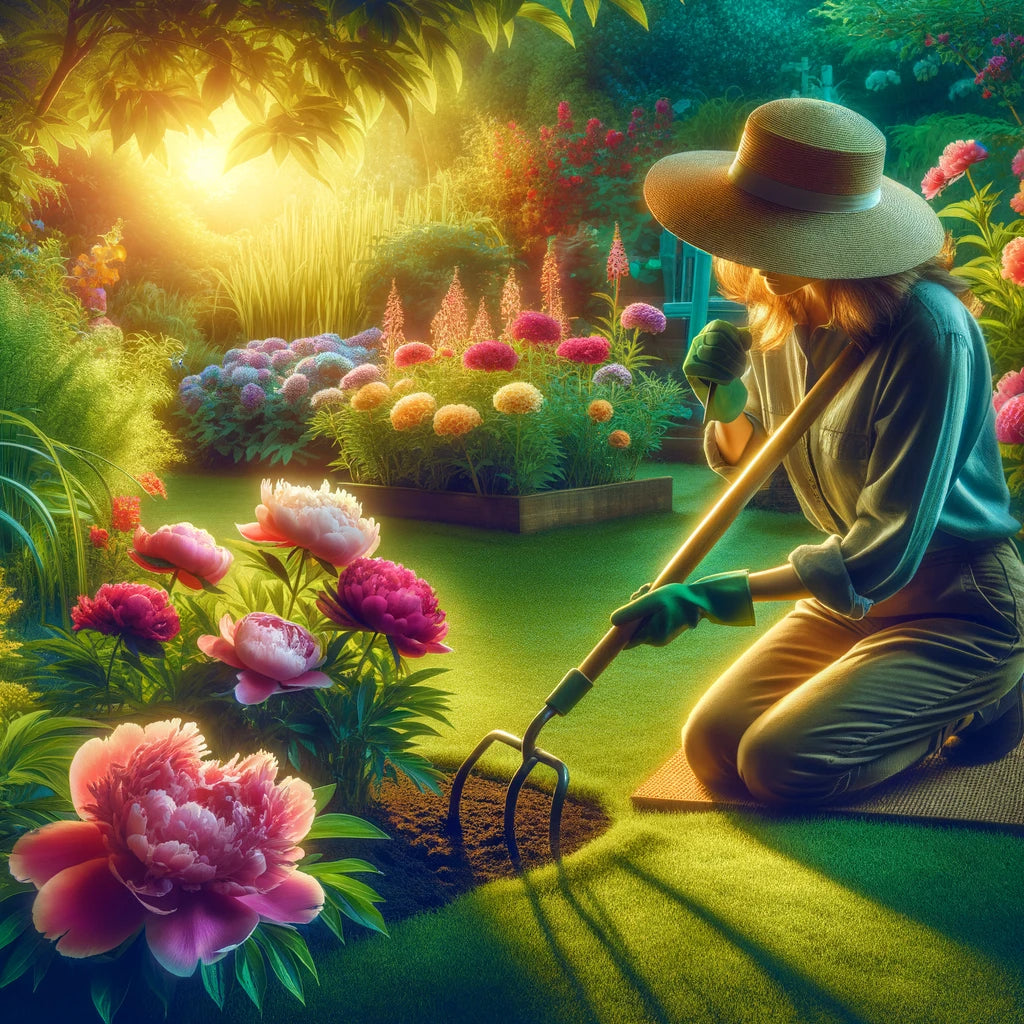Weeds. How do I get rid of weeds? You've got plants, and that's a good start. When we see weeds, we often think of them as nuisances. But really, they're just plants—plants we didn't want, perhaps not as aesthetically pleasing as we'd like. But, you have plants. So, if you're aiming to be a good plant grower, having some weeds is part of the process. Consider it done. Walk away. Crown yourself the world champion of plant growing. You've done it. So, feel good about it. You're already ahead of the game.
Now, the real question is, how do we get more of the plants we love and fewer of these weeds? There are essentially two strategies to consider.
A. Recognize that every weed is an opportunity for a plant you love. For example, if you have two peonies growing close to each other in a space that's quite tight, you might not want to add anything else tall. But what about the area beneath their foliage, not right by their crown, but a foot away from the plant? This is often a little weedy. Allow me to introduce you to alternatives like sedge or Blue Moon—the cutest little woodland phlox that sprawls across the ground, offering incredibly fragrant flowers in early spring. There are so many choices available. Whenever I approach a design project, the spaces between plants aren't just gaps. Plants don't adhere to a uniform spacing pattern, where we place them 18 inches, 24 inches, or 36 inches apart. That's not how plants grow in gardens. They mingle, complement each other, and contrast to create an artist's canvas or a stage of theater performers—whichever metaphor you prefer. Both a painting and a stage require their colors and palette, and both need their performers—the plants. Thus, more plants that you love mean less space for weed seed germination and fewer successful weeds. So, strategy one: Get more plants.
Strategy two remains the same: You should still be acquiring more plants. But it also encompasses seasonal hand weeding. I won't delve into it in this article, but I'll share that good soil makes weeding—a verb—easier than bad soil does. When weeds are in rougher, compacted soil, they set their roots like anchors, struggling to survive. Good soil, rich in loose structure, air, and a thick layer of organic matter, isn't a welcoming home for weeds. In such soil, weeds release easier. I've noticed that design projects where I haven't managed the soil preparation are always more challenging to weed and plant. In contrast, gardens with beautiful soil, like here at Natchez Glen, allow weeds to be easily removed, sometimes with barely any effort—a simple hand motion or a scuffle hoe does the job. So, good soil will indeed make your weeding tasks lighter. Again, this points back to soil, but there's a broader strategy to managing weeds, no matter where you are in the world.
In warmer parts of America, for instance, there are cool-season weeds that begin germinating in the fall and remain small through the season, only to start growing in earnest by January and February. By the time you're out in your garden in April, there's likely a robust weed waiting. Because we weren't tending to the garden in November, it's essential to remember that not all gardens are the same. Many gardens host plants that don't mind the frost, and many weeds fall into this category, being frost tolerant. So, avoiding garden maintenance through the winter often results in more weeding required in the spring and summer.
When starting a new garden, the first phase of weeding is indeed seasonal. I typically undertake one large weeding preparation in what I call late winter, usually around February. Then, another weeding session occurs in mid-May, when temperatures consistently rise, prompting weeds that prefer warmer weather to start germinating. This pattern repeats in early August, when temperatures are consistently high, and again in late October to early November, when cooler nighttime temperatures promote another group of weed seeds to germinate. With this cycle, you'll need a few tools—a bucket for the weeds and a nice hand hoe, for example. If you have a larger garden, a long-handled hoe might be useful for cutting through the base of weed roots to disrupt and remove them. The goal is to address weeds when they're small, cutting their roots, which then allows them to become little pops of nitrogen in your soil. But staying on top of weeding, and showing love for your garden, is what makes it thrive. Weeding isn't just a task; it's an integral part of gardening. It offers you a quiet, peaceful time to enjoy creating something beautiful. So, don't view weeding as mere work; see it as an essential component of gardening that helps you get closer to your plants and ensures a more bountiful bloom.

